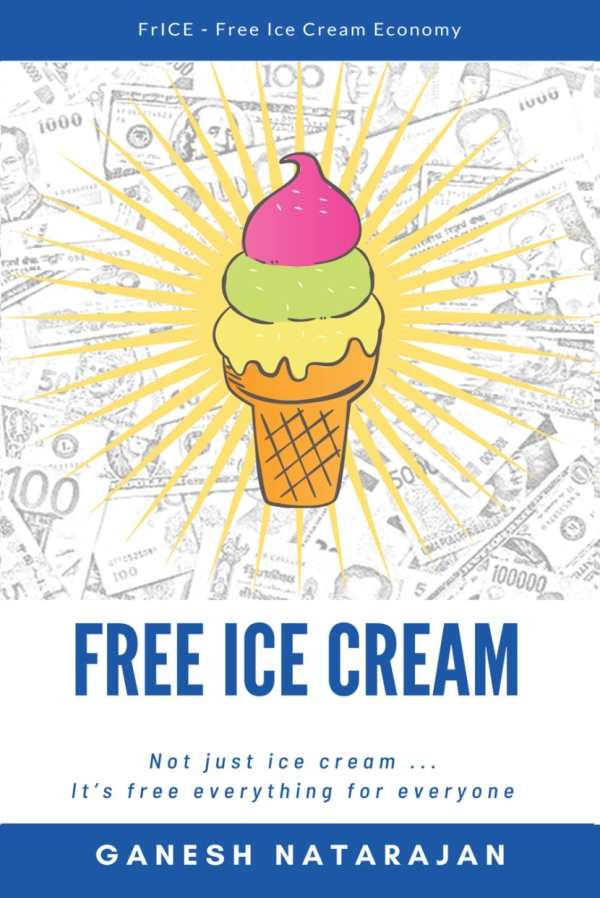Free Ice Cream
Free Ice Cream is a provocative exploration of the potential of creating an economy in which materials are free.
In Ganesh Natarajan’s inspirational business book Free Ice Cream, a group of friends attempt to radically change the global economy.
A group of high school students is confused when their business teacher assigns them a project: they are to open an ice cream shop where all the ice cream is free. The students are stumped: this goes against everything they’ve learned about business and economics so far. But since they need a passing grade, they buckle down and get to work. To their delight, they soon find a way to make their free ice cream shop a viable business. When their teacher dies several years later, four of the students—Meg, Emma, Miya, and Chen—work to turn his project of a Free Everything economy into a reality.
Equal parts a novel and an economic treatise, the book is split into three sections. The first introduces the project, the second covers its implementation, and the third peeks into the future for long-term results. Most of the book is dedicated to explaining how the economic model works, and how an economy “where every material thing is free to everyone” could develop in different countries. The middle section is marked by vicissitudes, as the students try to implement the project in Australia, the US, India, and Asian countries.
This is a text that challenges deep-seated assumptions about material cultures, including that items can never be free. It covers the implications of radical economic changes, too, in fields including energy, mining, automated labor, and education. Its future prospectus may follow years of disillusionment, but also shows the friends expressing hope for the future of their free economy model.
The last section is of particular interest as it clarifies that no economic model is human-proof; philosophical considerations of whether people are capable of overcoming their greed and resistance to change come in. A later coda also considers what might happen if the model were implemented without consideration of its social benefits, and only in service of the rich and powerful.
Though the economic model is meant to be central, the book’s narrative elements dominate it; they are the most resonant part of the project. The high schoolers’ annoyance over their impossible-seeming school assignment is amusing, and the weariness they feel as adults is authentic. The full-circle ending returns the group to a free ice cream shop, where they meet to deliver a melancholy question mark.
Free Ice Cream is a provocative exploration of the potential of creating an economy in which materials are free.
Reviewed by
Carolina Ciucci
Disclosure: This article is not an endorsement, but a review. The publisher of this book provided free copies of the book and paid a small fee to have their book reviewed by a professional reviewer. Foreword Reviews and Clarion Reviews make no guarantee that the publisher will receive a positive review. Foreword Magazine, Inc. is disclosing this in accordance with the Federal Trade Commission’s 16 CFR, Part 255.

